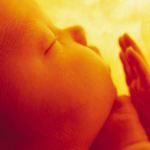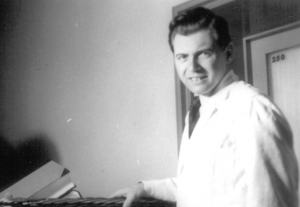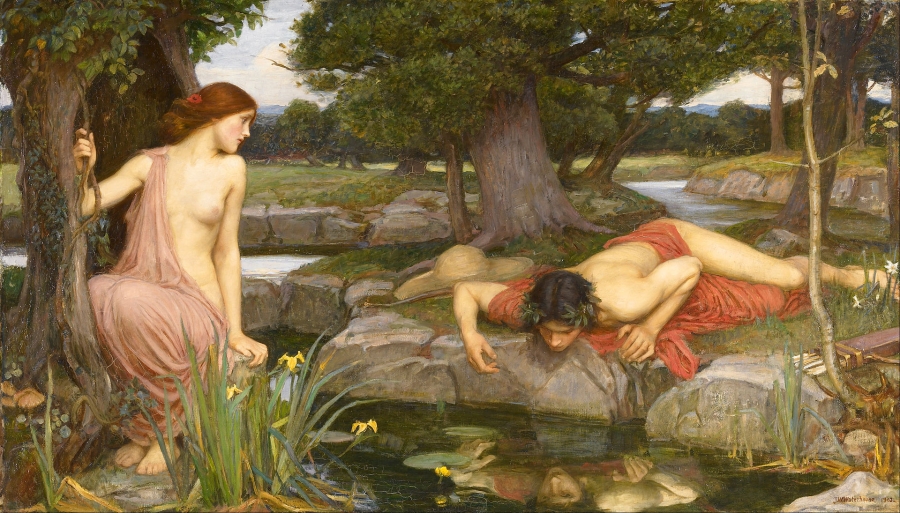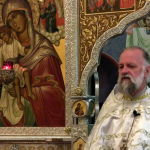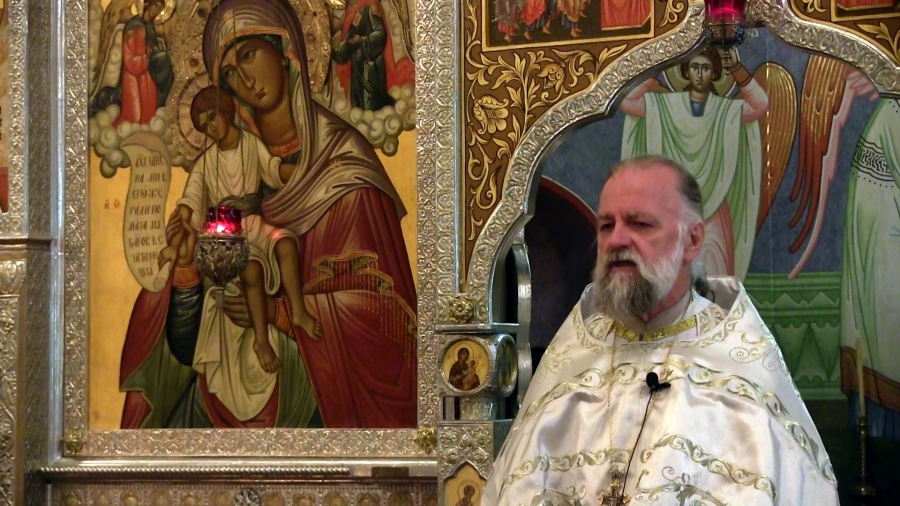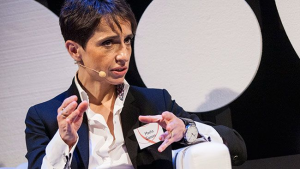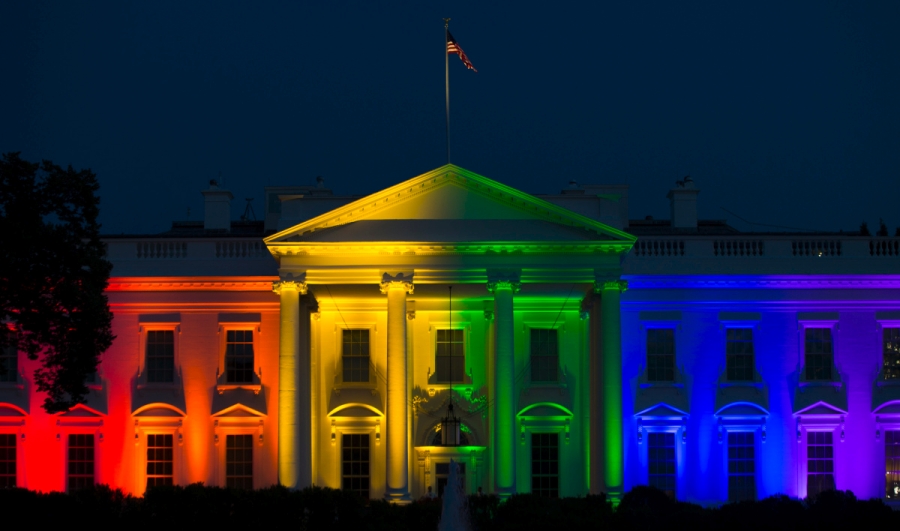Deprecated: trim(): Passing null to parameter #1 ($string) of type string is deprecated in
/home/aoiusa/public_html/wp-content/plugins/sexybookmarks/public.php on line
388
Deprecated: trim(): Passing null to parameter #1 ($string) of type string is deprecated in
/home/aoiusa/public_html/wp-content/plugins/sexybookmarks/public.php on line
394
Deprecated: trim(): Passing null to parameter #1 ($string) of type string is deprecated in
/home/aoiusa/public_html/wp-content/plugins/sexybookmarks/public.php on line
400
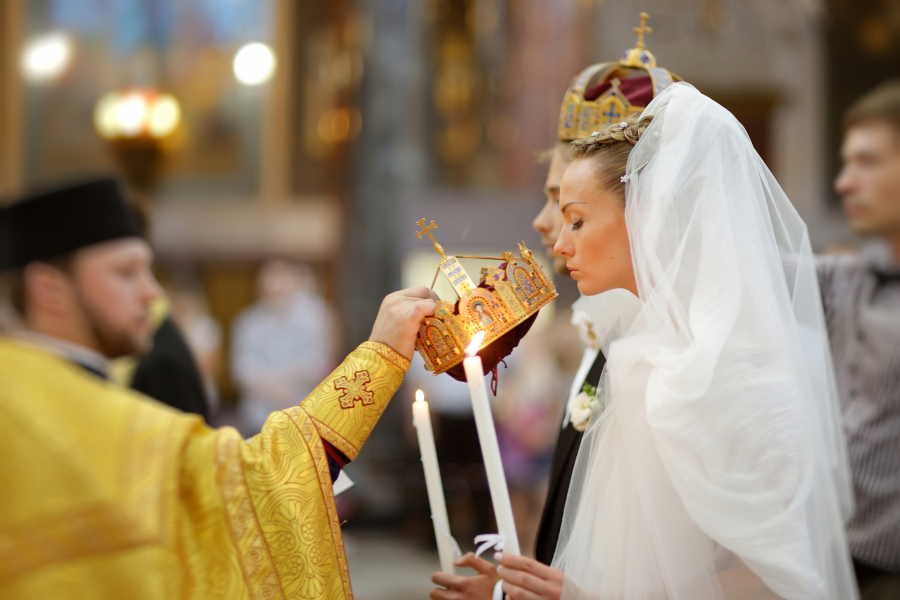
By Dr. Vigen Guroian
In recent decades, a vehement campaign has been waged in the United States to redefine lawful marriage so that marriage includes couples of the same sex. The argument has been cast principally as a civil liberties issue, and on June 26, 2015, this argument won the day. By a 5-4 decision in Obergefell v. Hodges, the Supreme Court declared that marriage is a constitutional right for all citizens, and that laws banning same-sex marriages are unconstitutional.
The Court’s decision is the fruit of a ruinous juridical and legislative nominalism that twists the meaning of marriage beyond anything before recognizable in our culture or in historical religion. This nominalism embraces the strange notion — strange to the Orthodox faith, certainly — that the love and desire which two persons have for one another constitutes a marriage even when they are of the same sex. Several decades ago, Robert Bellah, in his book Habits of the Heart (1985), described an ethos to which increasing numbers of modern folk adhere —and now, it seems, the Court as well. Bellah calls this ethos “expressive individualism.” Expressive individualism, he explains, “holds that each person has a unique core of feelings” that should be allowed and enabled “to unfold or be expressed” in order that an authentic and self-fulfilling “individuality is . . . realized.” It is this notion that inspirits the majority opinion in Obergefell v. Hodges, apart from the legal and constitutional embellishments presented as arguments.
It is difficult to imagine how the Supreme Court’s action can be interpreted as anything other than a repudiation of millennia of human and divine wisdom about the nature and the meaning of marriage…We must realize that under the new order, Orthodox Christian beliefs about marriage will be judged by many (a judgment the law now supports) as an offensive totem of a backward religion.
Writing for the majority, Justice Anthony Kennedy repeatedly appeals to the “dignity” of the person, nine times in all. In Kennedy’s hands, however, dignity takes on a distinct meaning as a secularist “god-term”2 of expressive individualism. Dignity, in his hands, stands for the belief that self-expression and self-realization of personal desire are among the foremost values and ends that the law should serve. As Justice Clarence Thomas rightly observes in his dissenting opinion, this notion of dignity is not that dignity biblical faith recognizes, a dignity that is grounded not in human desire or law but rather in that creative act of God wherein He endows every human person with the imago Dei – the image of God.
In addition, Kennedy speaks of marriage as a “union” of two individuals, yet he does not tell us how the two “become something greater than they once were.” He merely asserts that this is so. He does not suggest how this union is deeper than the momentary feelings or desires that bring two persons together. Kennedy’s embrace of expressive individualism is limiting. It cannot find the important difference between a partnership of two persons of the same sex and a sacred union of two persons of the opposite sex that traditional jurisprudence and the Christian faith uphold.
It is difficult to imagine how the Supreme Court’s action can be interpreted as anything other than a repudiation of millennia of human and divine wisdom about the nature and the meaning of marriage. For until our day, our culture, informed by biblical religion, understood marriage strictly as a union of one man and one woman. Until our day, this conviction was reflected in common morality and ensconced in civil law. Now this meaning has been exploded, vacated from the law.
This obliges the Church to be much clearer than it ever has been about its theology of marriage, what it means by marriage, and why a partnership—and partnership is the right term, not union or marriage—of any sort between persons of the same sex is not in character nuptial. We must realize that under the new order, Orthodox Christian beliefs about marriage will be judged by many (a judgment the law now supports) as an offensive totem of a backward religion. This calls for serious soul-searching about how, henceforth, we are to live as Orthodox Christians in this society. I believe justice Samuel Alito is entirely sober and not being the least bit alarmist when he warns in his dissenting opinion: “The decision will also have other important consequences. It will be used to vilify Americans who are unwilling to assent to the new orthodoxy,” as their nonconformity will be analogized to the denial of “equal treatment for African-Americans and women.”
History and Our Understandings of Marriage
Some reflection on history will help us to understand where we stand in this place and at this moment. In pagan Rome during the first centuries of the Christian era, marriage was one of several acceptable forms of cohabitation and family life, and was available as a legal status only to free citizens. If two such persons, man and woman, lived together by consent in a regularized fashion and assumed the roles and responsibilities of husband and wife, then they were considered married under the law. Roman law stipulated that marriage in its essence was not about intercourse, but about the free consent of the individuals entering into it. Marriage would exist, therefore, where there was the intention to form a household and did not require legal formalization, though that was available and qualified a couple for the special privileges accorded marriage. These privileges included passing down the family name to children, and inheritance of the father’s estate by the legitimate offspring of the marriage. To one degree or another, the early Church found its way to bless the civil marriages of couples under Roman law. By virtue of the Supreme Court’s redefinition of marriage that includes same-sex couples, it is wrong for the Church to receive and consecrated civil marriage.
Nonetheless, the Court’s decision is not wholly discontinuous with the past. The Court continues to embrace an understanding of marriage as contract, a view that many churches also share. This view of marriage based in consent and contract gained dominance in Latin and Western Christianity as the Church ingested Roman law.
In the Orthodox tradition…the conjugal love union, and not consent or contract, is understood to be the very heart of marriage. Marriage is a sacrament of love, but not just any sort of love. This love union is founded and grounded in God’s will, in His creative act of making mankind male and female, in His creative act of making mankind male and female, so that, through their love for each other and their sexual union, a man and a woman may become “one flesh.”
To one degree or another, in Roman Catholic and Protestant traditions alike, consent was “baptized” as the cardinal element of marriage, and contract as its material representation. The Roman Catholic Church eventually defined marriage as a sacrament, but the principle of consent and rule of contract have been at least as important in its theology of marriage. These stand behind the Roman Catholic Church’s belief that the bride and groom administer their marriage to one another, and are reflected in its denial of divorce. (I do not have the space here for a more nuanced discussion of the Roman Catholic theology of marriage, especially more recent emphasis on the “nuptial mystery” by some writers, including John Paul II, which is more compatible with Orthodox theology.)
In the Orthodox tradition, consent was less pivotal in defining a marriage. The clerical officer (bishop or priest) representing the Church, blesses and marries the bride and groom, and the couple is by this act bonded as husband and wife to Christ and the Church. The conjugal love union, and not consent or contract, is understood to be the very heart of marriage. Marriage is a sacrament of love, but not just any sort of love. This love union is founded and grounded in God’s will, in His creative act of making mankind male and female, so that, through their love for each other and their sexual union, a man and a woman may become “one flesh.” Consent and contract more properly belong to betrothal (though Orthodox marriage rites include consent often by inference – and in some cases, as in the Slavonic version of the Byzantine rite, explicitly).
The Logic of Consent Allied with Expressive Individualism
Many North Americans, even Orthodox Christians, quite simply assume that the couple’s consent seals the marriage – that in a practical sense, the will and desire of the couple bring the marriage into existence, and that the withdrawal of will and desire to be together is sufficient to terminate a marriage. This is what present secular marriage and divorce law reflects. The point is simply this, that the principle of consent has remained fixed as a cultural norm even as contemporary people have forgotten the sacred meaning and sacramental depths of marriage, while at the same time they have been adopting an ethos of expressive individualism.
It would make much more sense under present circumstances for the state to abandon the language of marriage altogether and issue simple contracts of cohabitation. Even before Obergefell v. Hodges, civil marriage had become virtually meaningless under a regime of unilateral and no-fault divorce in which the norm of permanence disappears. In Obergefell v. Hodges, the Supreme Court has shown that is does not even know what marriage is.
The principle of consent, the logic supporting it, and a godless understanding of love as personal desire are what today enable the advocates of “gay marriage” to make great headway in the legislature and the courts—even within the churches, especially Protestant churches that lack a sacramental understanding of marriage. It should surprise no one that as the belief diminishes in these churches that homosexual acts are sinful, unnatural, or psychopathically abnormal, the argument for gay marriage gains plausibility and persuasiveness among their adherents. There prevails among many religious as well as secular people the belief that when two homosexual persons love each other, and desire and freely consent to share their lives with one another as a domestic couple, the state should grant this partnership legal status as a marriage. The Supreme Court has now also embraced this view and made it the law of the land.
Since the logic of consent and contract as well as equal protection under the law are deeply embedded in our cultural ethos and in modern jurisprudence, it is easy to imagine that the sorts of changes in marriage law and tax codes that the gay lobby has won may eventually be extended to other same-sex households that are not homosexual. How could the state possibly discriminate—or even ask the questions needed to discriminate—between homosexual and heterosexual couples of the same sex that come to get licensed? How can the state differentiate one love from another? If marriage is no longer defined as strictly between a man and a woman, why shouldn’t widows or widowers, brothers or sisters, and the like, who live together for mutual assistance and economic reasons, be granted licenses for domestic partnerships with all the legal benefits and protections now accorded to married couples?
It would make much more sense under present circumstances for the state to abandon the language of marriage altogether and issue simple contracts of cohabitation. Even before Obergefell v. Hodges, civil marriage had become virtually meaningless under a regime of unilateral and no-fault divorce in which the norm of permanence disappears. In Obergefell v. Hodges, the Supreme Court has shown that is does not even know what marriage is.
A Two-Tiered Arrangement
This revolution profoundly challenges the traditional understanding of marriage. It is emblematic of the crossroads at which our society is poised on many fronts. And it places Orthodox and other Christians in an agonizing countercultural position, whether they care to be there or not. Careful navigation in the culture’s tumultuous waters is required, at least as careful and considered as the period in Christian history beginning with the emperors Theodosius I and Theodosius II of the fourth and fifth centuries through Justinian in the sixth century. For this was the period in which Christianity became the official religion of the Empire, and the great law codes were promulgated that truly defined and shaped Christendom as a social realm. This has been our legacy up until now, when the heart and spirit of Christendom are, alas, being banished from North American soil, and the last remnants of these codes, which privileged marriage, supported sanctions against abortion and suicide, and provided for public prayer and the observation of Christian holy days, are eradicated from the land.
Much like Roe v. Wade, Obergefell v. Hodges will ignite heated conflict in society as a whole and within the churches themselves. This decision will give courage to significant numbers within our own churches who also believe that the Church should embrace same-sex marriage or give some kind of blessing of these relationships. It is completely naïve to think there are not such views in our congregations or within the Orthodox theological world. The abortion decision not only divided the nation—it split churches. Same-sex “marriage” is not just a moral issue; it is a sacramental matter. It affects how we envision ourselves as the Church. We must not underestimate the dangers that this issue presents.
For reasons that in this essay I can only sketch, and especially in light of the Supreme Court’s radical decision to legalize same-sex “marriage,” it is imperative that the Orthodox churches cease to cooperate or collaborate with the government in marrying persons, as has been done in one form or another within Christendom since the fifth and sixth centuries. This action would bring about a de facto two-tiered arrangement in which Orthodox Christians would obtain a civil contract to meet the legal requirement and qualify for married status before the state, and then come to the Church to receive the sacrament or marital blessing. Even under present arrangements, two marriage certificates are issued in most states, one religious and the other civil. Henceforth, the Church would no longer assume responsibility for consecration of the civil contract. By so acting, the Church would lodge its profound disagreement with the state’s unilateral and theologically erroneous redefinition of marriage. And the difference between marriage within the Body of Christ and the new forms of “marriage” that society has invented would be made clear. I believe that this action should be taken immediately. We should not wait.
My reasoning is that much like Roe v. Wade, Obergefell v. Hodges will ignite heated conflict in society as a whole and within the churches themselves. This decision will give courage to significant numbers within our own churches who also believe that the Church should embrace same-sex marriage or give some kind of blessing of these relationships. It is completely naïve to think there are not such views in our congregations or within the Orthodox theological world. The abortion decision not only divided the nation—it split churches. Same-sex “marriage” is not just a moral issue; it is a sacramental matter. It affects how we envision ourselves as the Church. We must not underestimate the dangers that this issue presents.
We should not wait for the federal government to pressure churches to conform to the new order with punitive sanctions, likely including the threat of the denial of tax-exempt status. If the government acts first and our churches merely react, the risk of dissension and division within the ecclesial body increases. If we act out of strength and conviction now and make it clear that we no longer can accept the state’s definition of marriage as in any way consistent with the Mystery of Marriage, we may be able to bring along even the vacillating and faint of heart.
The Orthodox Theology of Marriage
Allow me for a moment to address the theology of marriage that the Orthodox Faith holds so that we can be unmistakably clear about why same-sex “marriage” is not only wrong but also is potentially a source of grave confusion about what it means to be the Church. According to the new wisdom, legal marriage will be defined to cover a broad range of consensual domestic relationships, both heterosexual and homosexual, so that all who enter into these arrangements may receive the benefits traditionally reserved for marriage between a man and a woman. Marriage will be defined precisely as a civil liberty under the law, irrespective of sex or procreative intent.
By contrast, the Orthodox theology of marriage is grounded in the Church’s doctrines of God and Creation. While an anthropological argument opposing same-sex “marriage” on biological or natural law grounds is not necessarily incompatible with the Orthodox Faith, it is not sufficiently theological, nor is it ecclesial. For the Orthodox Church, the primary argument is sacramental and ecclesial.
From the standpoint of Orthodox theology, whether or not the individuals who seek a same-sex union are homosexual or heterosexual is not what is theologically decisive. Neither is the argument of procreation – in other words, that same-sex couples cannot produce offspring in the manner that heterosexual couples are able to do. While human beings, like other members of the animal kingdom, are sexually dimorphic, mate, and produce offspring, only human beings marry; birds and monkeys do not. A spiritual and sacramental dimension of human existence modifies human sexuality and transforms the human organism into something unique in the animal kingdom. Marriage is sign and symbol of this unique dimension of human sexual coupling. This is what makes marriage a sacrament; and male and female are the essential and non-substitutable elements of that sacrament. Thus, the Orthodox objection is to same-sex unions and not “gay marriage” per se, though the latter is a subset of the former.
Sacramental Union
The world is itself sacramental. In other words, it is epiphanic of God its Creator. The appointed sacraments of the Church are not exceptional (super) realities; they are not magic. Rather, they are specifications of the symbolical ontology of Creation, and they witness to the fact that humankind is created in the image of God. Each of the sacraments names and employs particular “natural” elements, reveals their epiphanic character, and employs their inherent capacity to serve God’s salvific purpose. Bread and wine are natural symbols of flesh and blood. Christ reveals them as symbols of His body and blood, in and through which He is verily present; and by consuming these translated elements, we enter into the most intimate communion with Him as one ecclesial body.
In the Orthodox Faith there could never be such a thing as same-sex marriage. There is not a same-sex equivalent to bride and groom. To insist that there are such equivalencies, and to act on this error, not only represents marriage as something it is not but also envisions salvation as something it is not.
Male and female are the exclusive elements and symbols of transformation in the Sacrament of Marriage. Marriage brings male and female together as God originally intended them: as spouses and companions to each other, husband and wife, one Christic and ecclesial being (Eph. 5:30–32). Through the sacrament, God seeks to heal our divided humanity at the primary source of its division, the alienation of male and female; He renders it whole once again; He restores male and female natures to their original unity and integrity.
This sacramental union of bride and groom is no mere cipher or allegory of human relationality, as some proponents of “gay marriage” argue. Bride and groom are not nominal titles that may be bestowed upon any two persons, irrespective of their sex or gender, who enter into a “loving relationship.” There is nothing incidental, accidental, or volitional about heterosexual humanity, or the fact that the male is groom and the female is bride, or that the marital union of a man and a woman is an icon of the eschatological union of Christ and the Church.
Christ is the Groom and the Church is His Bride of the New Creation. The referend of groom is the first man, Adam, and the referend of bride is the first woman, Eve. The nuptial Adam-Eve humanity of the Book of Genesis, the first book of the Bible, is the analogue of the heavenly nuptials of the marriage of the Lamb in the Book of Revelation (19:7), the last book of the Bible. The creation of nuptial humanity is an epiphany of the eternal humanity of God precedent to its complete revelation in the Incarnation. The creation of nuptial humanity is a prophecy of the Church, which itself, through its nuptial union with Christ, fulfills the goal and purpose of Creation. Human willing and choosing cannot change marriage’s essence, or the symbolism that God has ordained for it.
Thus, in the Orthodox Faith there could never be such a thing as same-sex marriage. There is not a same-sex equivalent to bride and groom. To insist that there are such equivalencies, and to act on this error, not only represents marriage as something it is not but also envisions salvation as something it is not.
Three Key Actions
The essence of marriage as a conjugal love union is symbolized in the Orthodox rite of marriage by three key actions: the joining of the hands of bride and groom, the crowning of the couple, and the sharing of the common cup. At the start of the Orthodox rite of matrimony, the celebrant joins the right hands of the bride and groom, by which is affirmed the primordial bond of union proclaimed by Adam: “This is now bone of my bones, and flesh of my flesh . . . and the two shall become one flesh” (Gen. 2:23–24). The Orthodox service recapitulates God’s primal act by which Adam and Eve were brought face to face to know each other as “self of self,” united in love, the image of God in His perfect communion of Father, Son, and Holy Spirit.
There follows the crowning of the couple. This indicates that, like every sacrament, marriage brings the Kingdom of God into our midst. Every marriage is, as St. John Chrysostom explains, a little church, in which the virtues of the Kingdom are learned and rehearsed. The bride and groom are king and queen of this new heavenly kingdom of their marriage. And God calls upon them to exercise within the domestic household that form of dominion over the world that He instructed the first couple to practice. The crowns are also a reminder that the Kingdom of God is won only though self-giving and self-sacrificial love, as when Christ went willingly to the Cross.
Last, the sharing of the common cup recalls Christ’s blessing of the wedding in Cana of Galilee. The water changed to wine is the sign that “marriage in the Lord,” as St. Paul puts it, is a sacrament of the Kingdom of God. “Natural” marriage is revealed as the matter or material of the sacrament. Sharing the wine is emblematic of the one-flesh union and the life of mutual love to which husband and wife must aspire. This practice of the shared cup and the remembered events at Cana also allude to Baptism and Eucharist. It is a means by which persons become members of the Body of Christ and participants in the divine life (2 Peter 1:4).
Marriage and Eucharist
As I alluded above, the early Church initially saw no need to perform a special ritual for marriage. It recognized the validity of marriage that the civil authorities performed and authorized. Rather, the Church gave couples its blessing and invited them to share the Eucharist together as a sign of their union in Christ and belonging to the Body of Christ. It was not until the ninth and tenth centuries that a complete rite of matrimony emerged. At this time, marriage was gradually removed from the Eucharist altogether, and just the sharing of the common cup remained, which may in some places have existed alongside the Eucharist. Today, this isolation of marriage from the Eucharist, whatever the historical reasons for it, needs to be reexamined.
Under the new regime of Obergefell v. Hodges, there are compelling reasons for the Church to demonstratively rejoin marriage and the Eucharist—that is, to bring them into greater liturgical proximity.
A serious look into the history of marriage leaves no doubt that marriage is closely related to the Eucharist (as well as to baptism). Now under the new regime of Obergefell v. Hodges, there are compelling reasons for the Church to demonstratively rejoin marriage and the Eucharist—that is, to bring them into greater liturgical proximity. It is a common practice in the Armenian Church for couples to take Communion together on a Sunday preceding their wedding. I would like also to see a nuptial Eucharist to be made available, and even encouraged. I will explain why in a moment.
My immediate point is that as the Eucharist is the “home” of Christians, so also is it the home of Christian marriage. The early Christian apologists, who fully acknowledged the legal validity of civil marriage, insisted upon this mystical connection between Christian marriage and the Eucharist. The late second-century writer Tertullian, in a letter to his wife, beautifully expressed this sentiment:
What words can describe the happiness of that marriage which the church unites, the offering strengthens, the blessing seals, the angels proclaim, and the Father declares valid. What a bond is this: two believers who share one hope, one desire, one discipline, the same service.
St. Theodore the Studite, in the early ninth century, mentions two elements that belonged to Eucharistic marriage as early as the fourth century. He informs us that a crowning ceremony existed, followed by a brief prayer, a prayer that is virtually replicated in Orthodox rites of marriage today:
Thyself, O Master, send down Thy hand from Thy holy dwelling place and unite these Thy servant and Thy handmaid. And give to those whom Thou unitest harmony of minds; crown them into one flesh; make their marriage honorable; keep their bed undefiled; deign to make their common life blameless.
This simple blessing encapsulates the entire meaning of Christian marriage. God marries man and woman, and only man and woman, as God also is present at every Christian marriage. Christian marriage is a mystery, and this needs to be made clear to the courts for constitutional reasons as protection under the free exercise clause. I believe closer performative proximity of marriage and the Eucharist may be very important for making the case.
More About Mounting a Defense of Marriage in Our Present Circumstances
Rejoining marriage and the Eucharist is not just a matter of sentiment. Nor is it only a theological matter. It is also practical, even strategic. Sometimes, the children of God need to be as wise as serpents. The free exercise clause of the Constitution – the First Amendment – will be crucial to the Church’s defense as it insists that its marital practices are off grounds for the state. We must be in the best position possible to mount the argument that Christian marriage is integral to Christian worship – that it is a mystery of the Church linked to the Eucharistic feast.
We are in a place at present when vigilance and strong leadership are needed. As I have said, the moment has arrived when clergy must no longer act as agents of the state in signing (or in any way giving the impression of consecrating) civil contracts. This must be done so that the faithful understand that what the state now defines as marriage is not the Church’s belief.
Even this defense may not be as easy as it once might have been. In Obergefell v. Hodges, the Court seems to have fixed on a conception of marriage far removed from sacrament and worship. This is the idea that marriage is an “expressive association.” The concept is related to expressive individualism. It is far more attuned to individual autonomy variously expressed. It can be blind to the freedom of an ecclesial body or its communal exercise of prayer and worship. It is telling that in his majority opinion Justice Kennedy makes no mention of the free exercise clause as a protection from over-reach by the state. Rather, he speaks in patronizing terms of the protection that the First Amendment gives to “religious organizations and persons” that they may “seek to teach principles [this writer’s emphasis] that are . . . fulfilling to their lives and faiths.” Teaching is not exactly the exercise of faith, whether we are speaking of worship, blessing, or prayer. If I may say so, Kennedy’s words are a chilling reminder of how faint our courts’ appreciation is of the relation of marriage to the exercise of religion, specifically the church as a praying and worshiping body of believers, and marriage as belonging to that.
We are in a place at present when vigilance and strong leadership are needed. As I have said, the moment has arrived when clergy must no longer act as agents of the state in signing (or in any way giving the impression of consecrating) civil contracts. This must be done so that the faithful understand that what the state now defines as marriage is not the Church’s belief. We should put our minds to welcoming this moment as an opportunity to clarify what the Church’s vision of marriage truly is. This new catechesis should be the joint endeavor of bishops, priests, and laity – of episcopal letters, sermons in parishes, and religious education at all levels. And we must begin no later than tomorrow.
ENDNOTES
1. Portions of this essay first appeared in an article entitled “Let No Man Join Together: An Orthodox Christian View of a Besieged Sacrament,” which was published in Touchstone: A Journal of Mere Christianity, January/February 2011. It, however, has been significantly reworked for this volume.
2. Following the rhetorician Richard Weaver, a term that is perceived automatically as good.
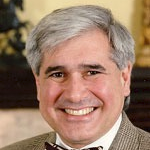
Dr. Vigen Guroian
Vigen Guroian is retired Professor of Religious Studies in Orthodox Christianity at the University of Virginia. Included among his books are Incarnate Love: Essays in Orthodox Christianity, Ethics After Christendom: Toward an Ecclesial Christian Ethic, and The Melody of Faith: Theology in an Orthodox Key. He is presently completing for Oxford University Press a book on marriage in the Orthodox tradition.
